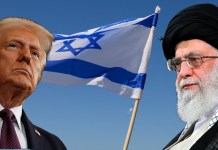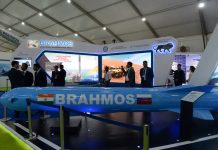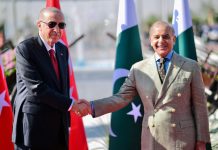The United States, with one of the most advanced militaries in the world, has achieved several aerial victories over its adversaries. The US Navy, for one, scored the first naval aviation jet-to-jet kill in the world on November 9, 1950.
Seventy-five years ago, months after the Korean War broke out, William T. Amen of the VF-111 Sundowners unit of the US Navy, piloting the F9F Panther, made history when he downed a Soviet-piloted MiG-15, the most agile Soviet fighter of the time, over North Korea.
The incident marked the first documented instance of jet-versus-jet victory anywhere in the world.
This incident is the most remembered not just because it made history, but also because of the dissonance regarding the first jet-to-jet kill. Interestingly, the US claimed on November 8, 1950, 1st Lt. Russell J. Brown in an F-80C Shooting Star had downed a MiG-15.
However, decades after the incident, it was determined that the Russian fighter that was allegedly hit by the Shooting Star had safely returned to base, as documented by Barrett Tilman and Henk van der Lugt in their book VF-11/111 Sundowners.
This meant that the Shooting Star’s aerial victory did not result in a kill.
The November 9, 1950, kill by Amen has since been popularly recognized as the first all-jet air-to-air victory by both sides. However, several sources still attribute the first hit to the Shooting Star, which was one of the first jet fighters deployed by the USAF.
Prelude To The Korean War & Use Of Jet Fighters
After World War II ended, the United States, like other allies, began decommissioning combat units, discharging military personnel, and dismantling arsenals in the peaceful years following the war. However, during this time of relative peace, the Air Force continued to work on building a combat jet for future battles.
It must be noted that Korea was divided at the 38th parallel after World War II, with the Soviet Union occupying the north and the United States occupying the south. Later, two separate governments were formed on either side: the Democratic People’s Republic of Korea (DPRK) in the north, and the Republic of Korea (RoK) in the South.
The peace attained by the end of World War II was interrupted on June 25, 1950, when the North Korean forces crossed the 38th parallel with Soviet-backed tanks and artillery, quickly invading Seoul. They came with Soviet equipment and backing, albeit discreetly and without a public declaration of the Soviet role. Nonetheless, this war marked the beginning of a treacherous Cold War between the US and the former USSR.
The North Korean attack immediately triggered warnings in Japan, which was close to South Korea, far to the east and south of the Korean battlegrounds.
In Japan, the US Fifth Air Force’s bases stretched from Kyushu in the south to Honshu in the north in a defensive arc. In fact, the Fifth was the largest of the Far East Air Forces (FEAF) and the main air component of the Southwest Pacific Area Theater under General Douglas MacArthur.
The United States entered the Korean War on June 27, 1950, when the then-President Harry S. Truman authorized US air and naval forces to support South Korea, followed by ground troops in early July.
Soviet involvement was evident from the start, as the Korean military used Soviet T-34 tanks and artillery. Stalin provided diplomatic cover and logistics but avoided direct combat to prevent escalation with the US. China, which was aligned with the Soviet Union and North Korea, entered the war in October 1950.
By the late 1950s, Soviet pilots were believed to be flying MiG-15 jets under the guise of Chinese or North Korean units. They were responsible for engaging US aircraft over North Korea, particularly in what came to be known as the “MiG Alley” near the Yalu River.
The Korean War marked the first large-scale jet-vs-jet air combat in history, with the United States Air Force (USAF), Navy (USN), and Marine Corps (USMC) dominating the skies against North Korean, Chinese, and Soviet-piloted aircraft. The US achieved air superiority within weeks and maintained it throughout the conflict.
Several USAF fighters, including the F-86 Sabre, F-84 Thunderjet, and B-29 Superfortress, gained popularity in the war. “The U.S. Air Force pilots did not start scoring heavily against Russian-made MiG-15 jets until the swept-wing F-86A Sabre arrived in Korea in late 1950.
Then the victories began to mount, and by the end of hostilities in July 1953, 38 USAF pilots had become aces by shooting down five or more enemy aircraft (nearly all of which were MiG-15s),” writes the USAF National Museum.
However, it was a US Navy carrier-capable F9F Panther that enabled the US to achieve its first-ever jet-on-jet kill.

When The Panther Hunted A MiG-15
The Grumman F9F Panther was a pioneering carrier-based jet fighter developed by Grumman Aircraft Engineering Corporation for the United States Navy (USN) in the late 1940s. It marked the Navy’s transition from propeller-driven aircraft to jet propulsion, becoming the first straight-winged jet fighter to enter service.
Nicknamed the “Panther”, it was renowned for its ruggedness, reliability, and versatility as both a day fighter and fighter-bomber.
It was a single-seat, single-engine, low-wing monoplane optimized for carrier-based operations. Its straight wings measured 38 feet in span and folded upward for storage.
The aircraft’s armament was formidable for its era, with four 20 mm M3 cannons in the nose and six underwing hardpoints for air-to-surface HE rockets. The Panther was the first carrier-based aircraft to fly in combat.
The Panther’s straight wings made it stable at low speeds. It had a maximum level speed of about 575 mph, which was inferior to the MiG-15’s maximum speed of 669 mph. Nonetheless, its robust construction, including an all-metal stressed-skin structure, withstood intense flak, earning praise for its survivability.

The Panthers flew a variety of missions: air superiority, close air support, interdiction, and reconnaissance. However, their straight wings typically proved a handicap.
In contrast, the MiG-15 first appeared over the Korean skies in late 1950, with Soviet pilots secretly flying missions from China to aid North Korea.
These agile MiG-15 Soviet fighters, flown by Russian, North Korean, and Chinese pilots, were proving a significant threat to US air superiority. They demonstrated superior maneuverability and firepower, which US pilots struggled to counter.
One key advantage the MiG-15 held over Western fighters was its ability to reach higher altitudes. With a service ceiling of over 50,000 feet, MiG-15 pilots could easily climb to heights. Along with its altitude advantage, the MiG-15 also featured remarkable speed and acceleration, outpacing the F-86 Sabre’s performance.

This speed, combined with its climbing rate of 9,200 feet per minute, allowed the MiG-15 to outmaneuver and evade Western jets in dogfights. The ability to quickly ascend, combined with superior speed, meant that MiG-15 pilots could dictate the terms of engagement, choosing when to engage in combat and when to retreat.
The Korean War saw some of the most intense and thrilling dogfights in the history of modern air combat, many of which occurred in a region known as “MiG Alley.”
This area, located in the northwestern part of North Korea, where the Yalu River meets the Yellow Sea, became infamous as the site of numerous air battles between Soviet MiG-15s and American jets.
Despite the MiG-15’s cutting-edge capabilities, the US Panther was able to take it down.
The milestone occurred during Operation Sinuiju, a USN strike on vital bridges at Sinuiju, North Korea, near the Yalu River border with China.
Launched from USS Philippine Sea (CV-47) carrier, the mission involved F4U Corsairs, AD Skyraiders, and escorting F9F-2Bs from VF-111 and VF-112.
The MiG-15s from 139th GvIAP (Guards Fighter Air Regiment), responsible for protecting the Sinuiju bridges, were scrambled to intercept the US attack aircraft, with Captain Mikhail Grachev leading.
The battle turned into a dogfight in and out of the clouds as the MiGs approached the American aircraft and launched their attacks.
Leading the Flying Target CAP (Combat Air Patrol) in a VF-112 Grumman F9F-2B Panther, pilot William T. Amen noticed an unidentified aircraft closing on his tail.
Grachev’s MiG-15, at 15,000 ft, yawed while scanning, allowing Amen to close from 4,000 ft and fire 20 mm rounds, striking the fuselage.
As the MiG passed his line of sight, Amen fired 20mm rounds into the target, even though his Panther had now entered the buffet because it was getting close to the terminal velocity, causing him to resist rudder reversal.
Both Grachev and Amen began to pull through at around 3,000 feet, with Amen recovering his Panther at a relatively very low altitude. In the midst of this chaos, Amen lost sight of the MiG during a hard G maneuver, but another pilot, Holloman, saw it strike a mountainside and explode in a massive fireball.
No US losses occurred, despite Soviet claims of five or six downed. This was considered the first confirmed jet-vs-jet victory. Amen’s feat highlighted the Panthers’ maneuverability in a dive despite their speed disadvantage. In fact, two more MiG kills followed on November 18 by Panthers from the USS Philippine Sea.
By war’s end, Panthers had flown 78,524 sorties, dropping 26,000 tons of ordnance and destroying 215 bridges, 78 trains, and 7,000 vehicles. While losses were documented, the aircraft had a very successful run, mainly due to its rugged design.
- Contact the author at sakshi.tiwari13 (at) outlook.com
- Follow EurAsian Times on Google News




